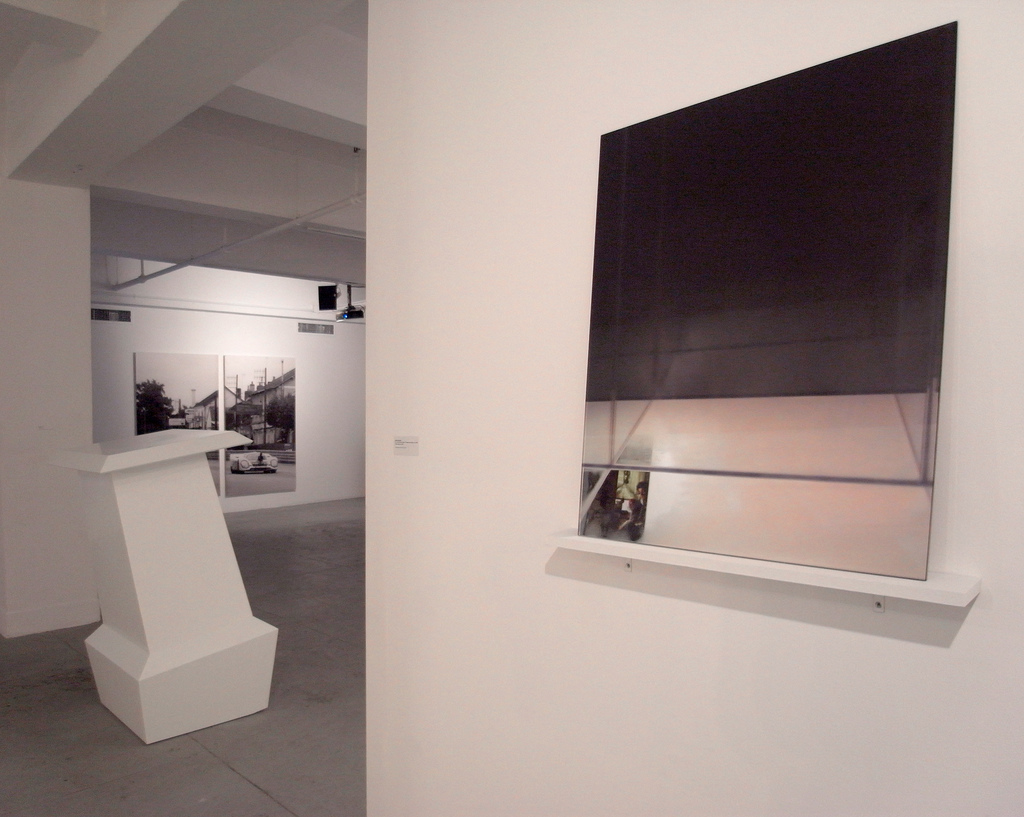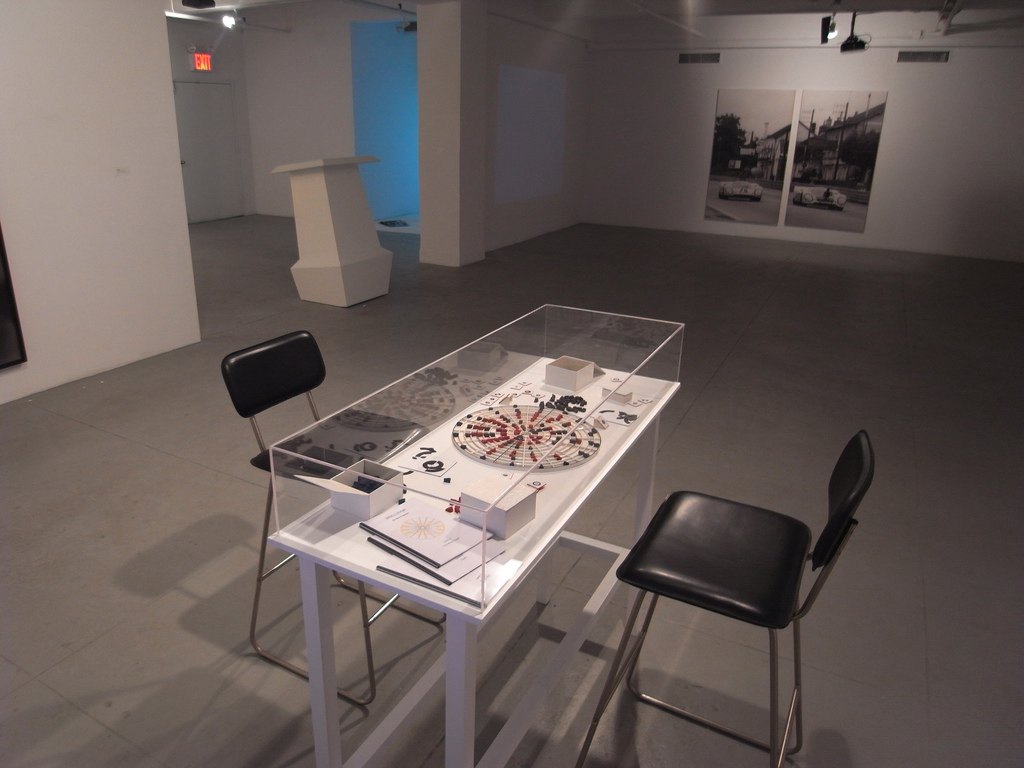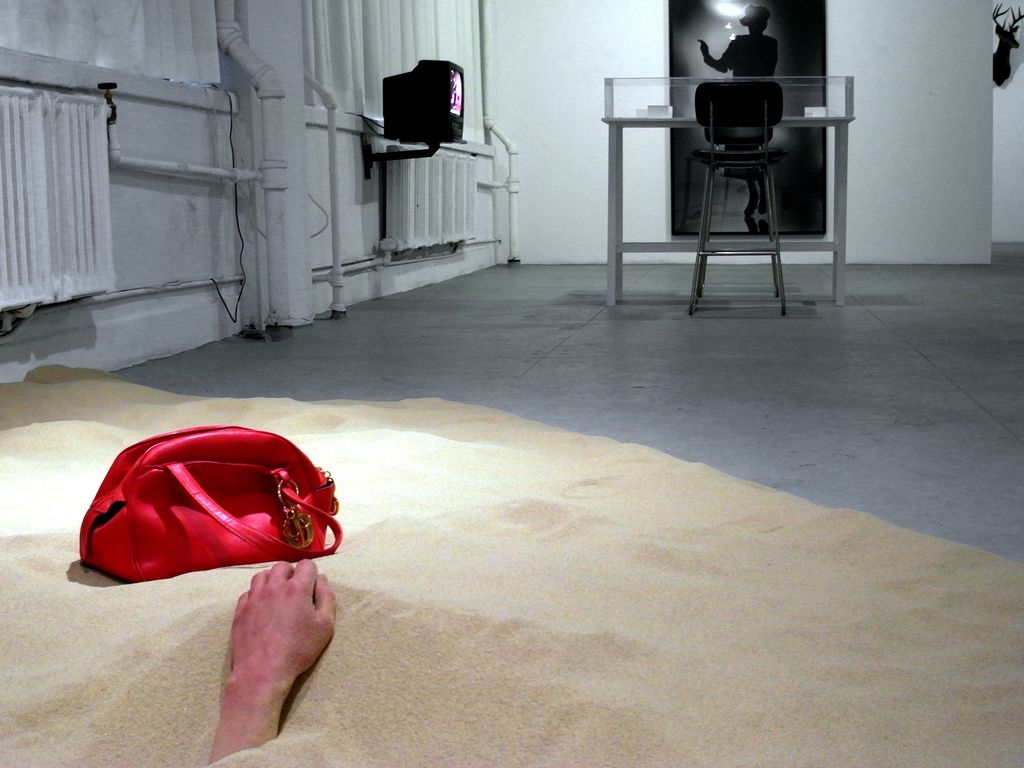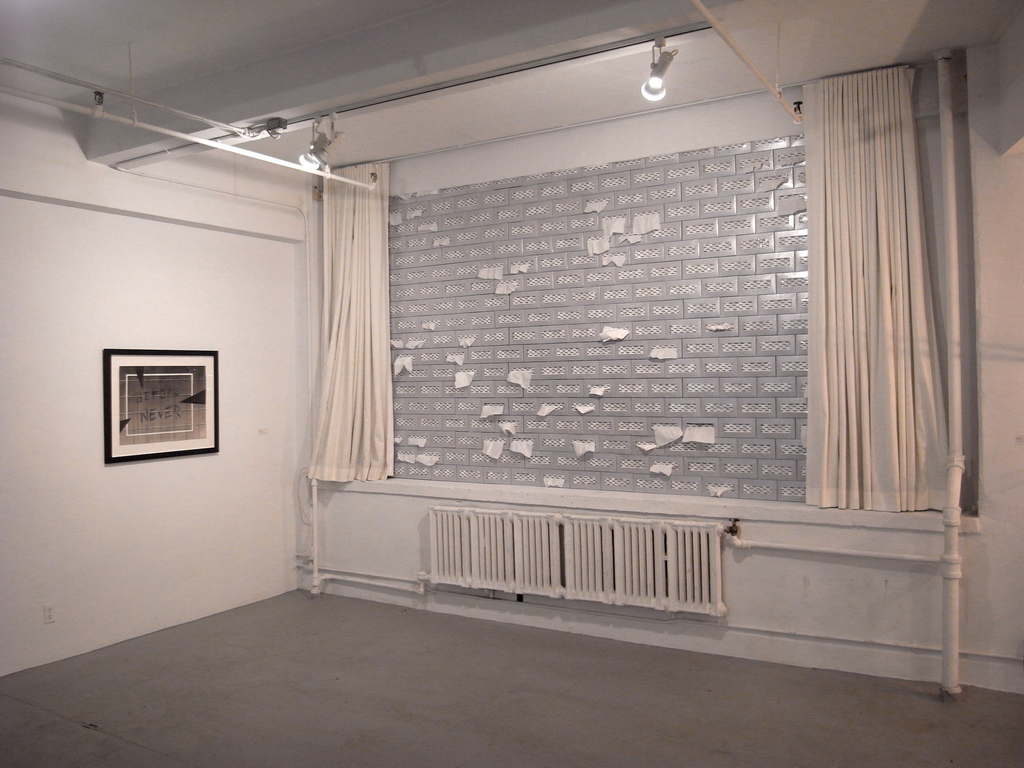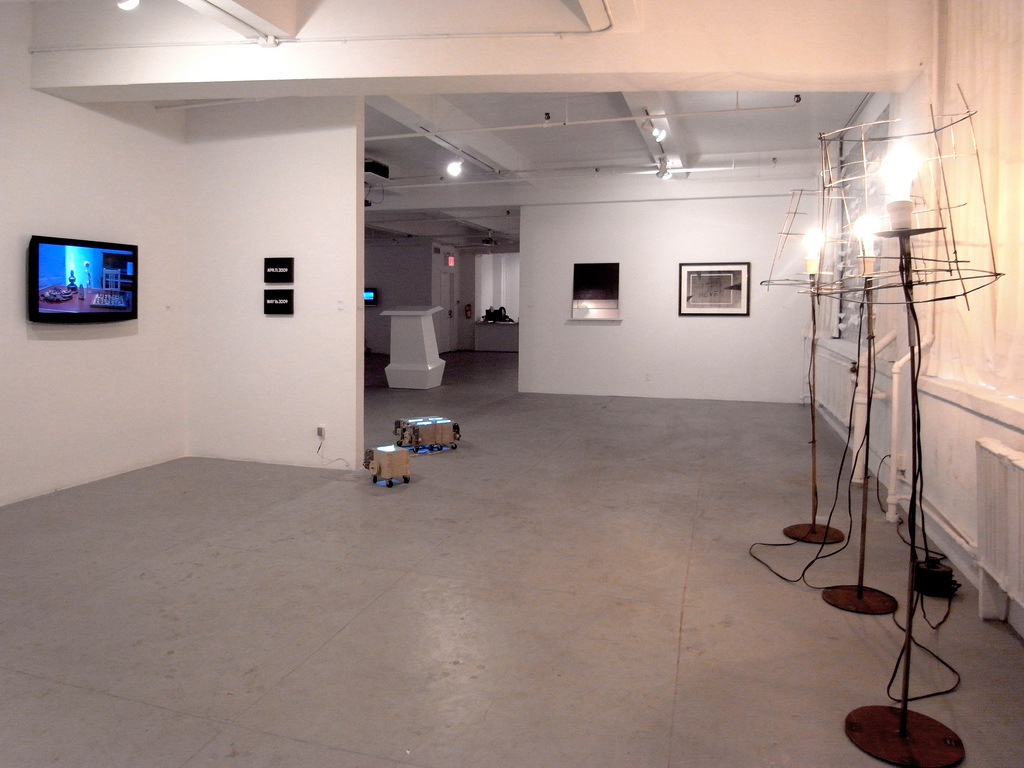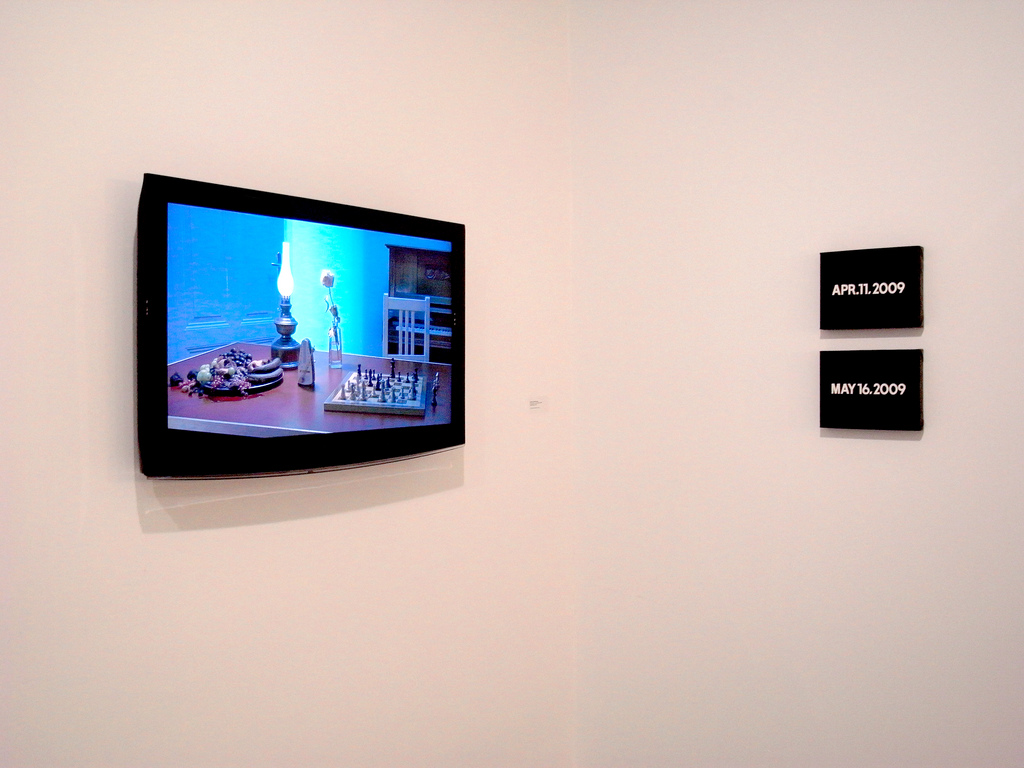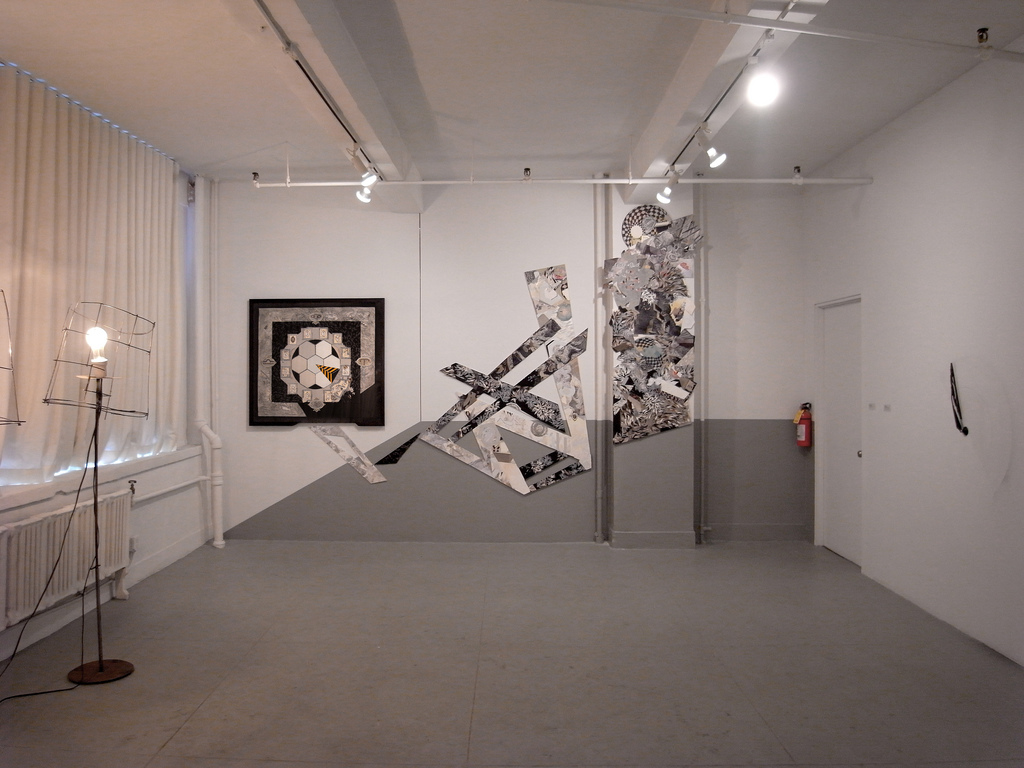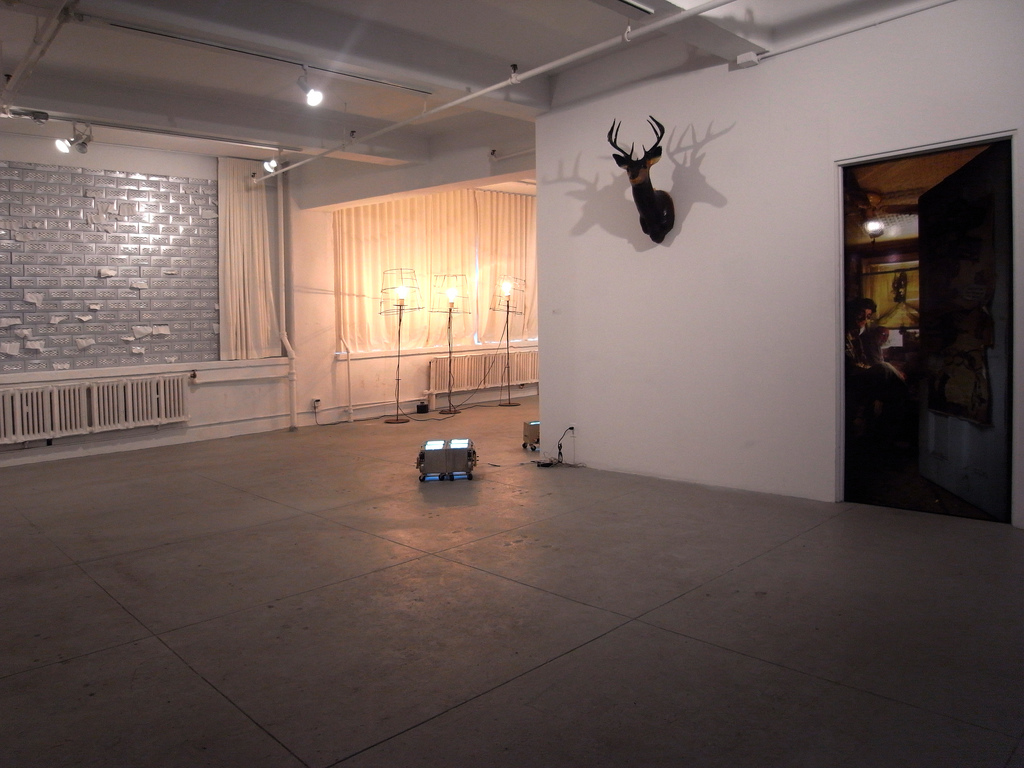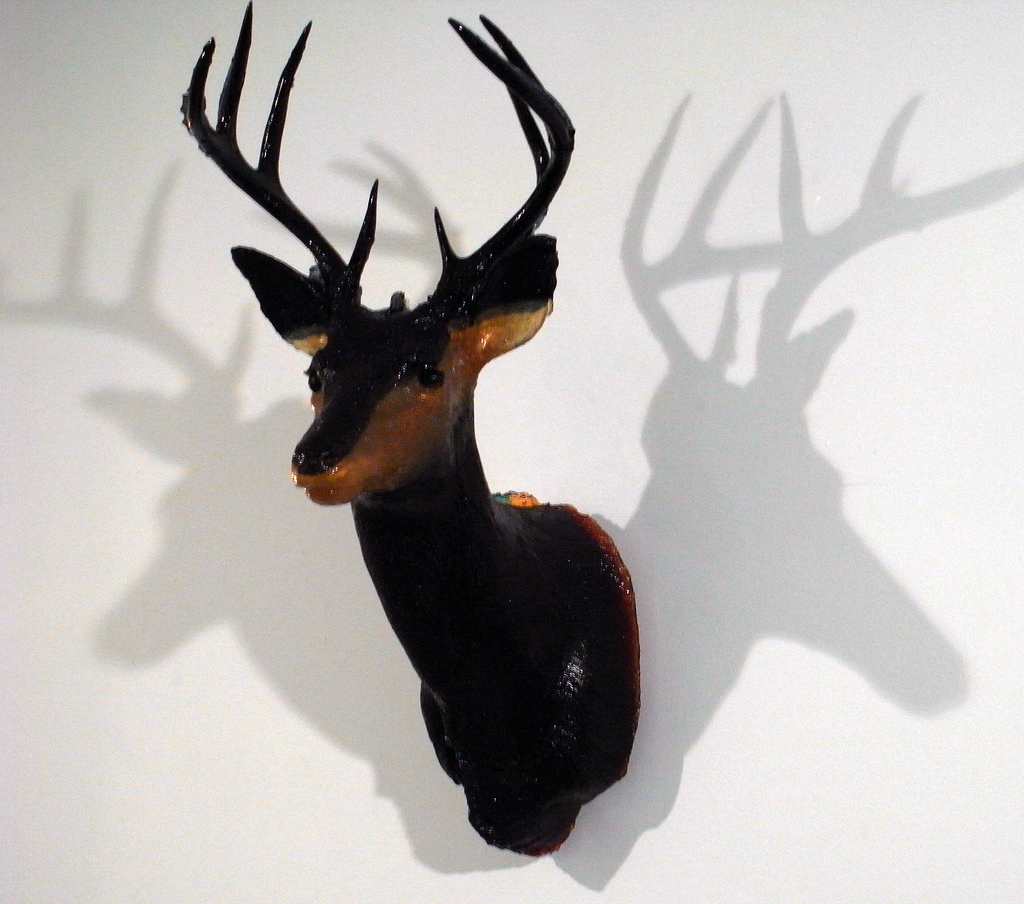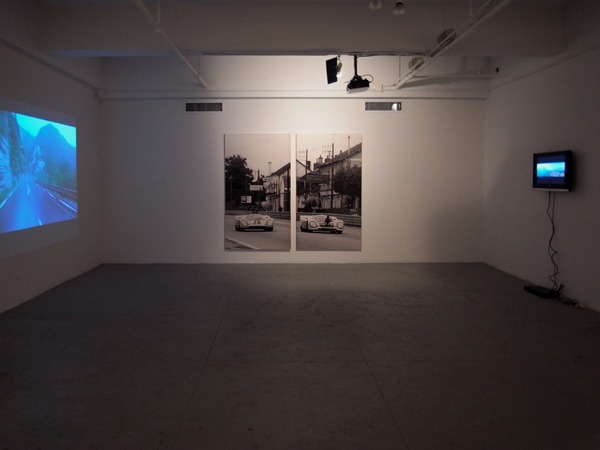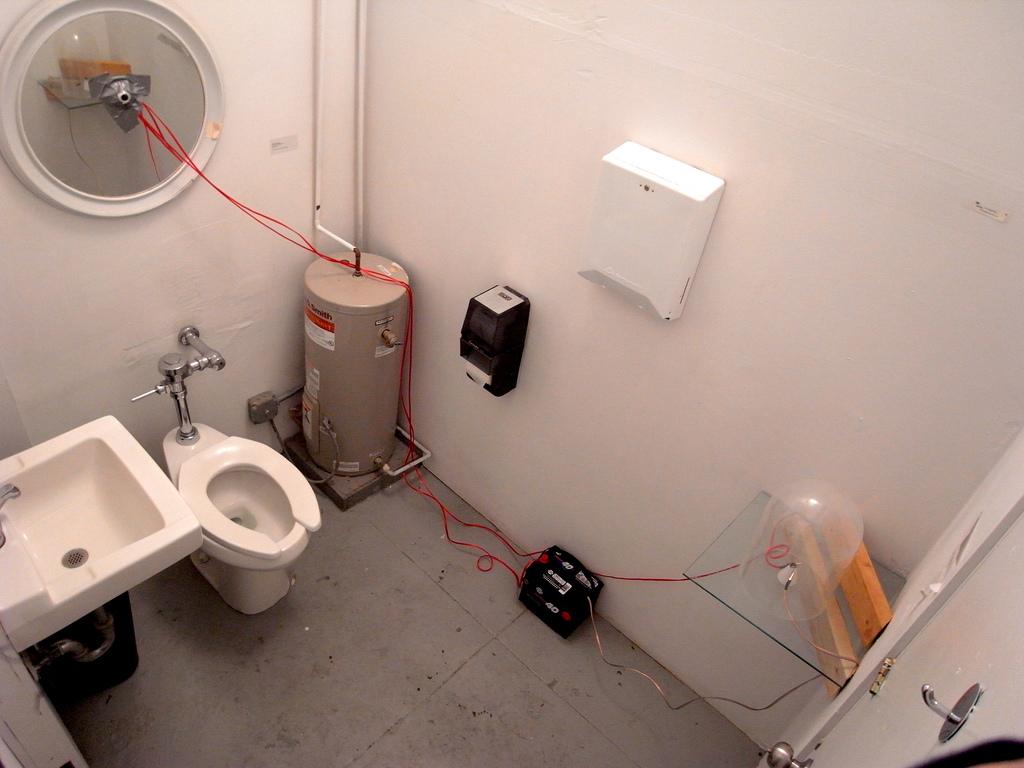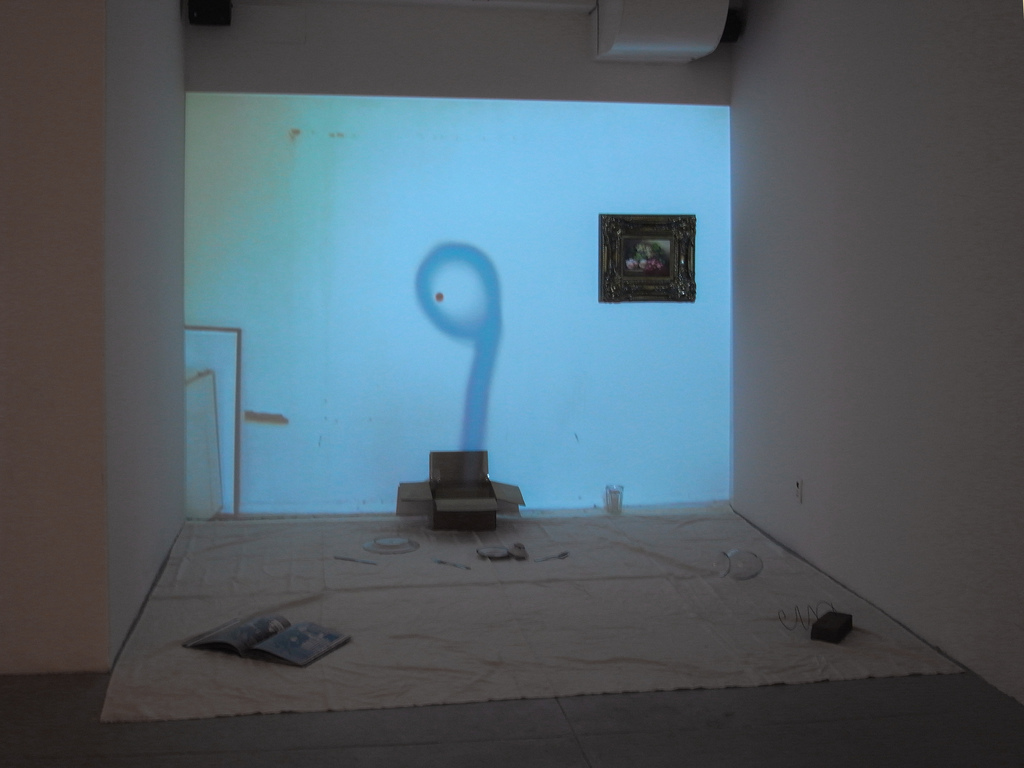Never Late Than Better
April 11—May 16, 2009
Curated by Trong Gia Nguyen
Artists
Julieta Aranda
Peter Belyi
Hannes Bend
Christopher Chiappa
Eric Doeringer
Josephine Wister Faure
Marc Ganzglass
Evan Gruzis
Christopher Ho
Marci MacGuffie
David Maroto
Laura Nova
Yuki Onodera
Rebecca Reeve
Egill Saebjornsson
Luke Stettner
Halldor Ulfarsson
Arnold von Wedemeyer
Mike Womack
EFA Project Space presents Never Late Than Better, on view from April 11 through May 17, 2009. On the centennial anniversary of the Futurist Manifesto, Never Late than Better contends with the questionable boundaries of space, time, and reality. Re-appraising the past and re-fashioning the present, the exhibition foregrounds a “bizarro universe” that counters the time-honored day-to-days of war, speed, and misogyny that F.T. Marinetti forecast in the Manifesto, published in Le Figaro in 1909.
Early or late, Time is above all else a form of adhesive, a correspondence that encompasses both the spoken and unspoken word. Never Late Than Better features artists who tweak the vagaries of reality and consider the laws of time and physics as an aesthetic. The Futurist Manifesto gives us occasion to celebrate the many faceted possibilities of the now, which look forward to the evolved commonplace, things such as universe expansion, collapsible theology, enlightened shadows, irreversible time, and the anti-Futurist whose penchant for prediction flames out with every undying death.
Certain works in the show rely on the time-proven formula of unpredictability, such as David Maroto's Disillusion, a board game whose very nature tempts repulsion and attraction in its players, and The Box, Egill Saebjornsson's installation of real objects and animation that conjure up, almost alchemically, a wild and whimsicalnarrative that seemingly defies all conventional means of storytelling. There are realms of utter predictability, like Eric Doeringer's two tomorrow paintings depicting the opening and closing dates of the exhibition in the manner of On Kawara's Today series, hereby beating the latter to the punch. Other works such as Arnold Von Wedemeyer's fast-moving still-life film Maelzel's Room and Christopher Chiappa's Wiper march on rhythmically to the count of their own metronomes. Other re-alities rethink the literal and recognizable in the deer head sculpture of Hannes Bend, made from sparkling candy, and the romantic geological longings of Christopher Ho's Lesbian Mountains in Love. Likewise migrating from past to present, a chase scene from Ian Fleming's Goldfinger is re-traced and re-imagined in Marc Ganzglass' installation A Bridge of Gold.
The Futurist Manifesto Is Whenever, a supplementary guide, will evolve with the duration of the show. Altering the traditional audio-tape guide, a selection of curators, critics, artists, and musicians will walk through the show before it opens and record their immediate responses, speaking into an old-fashioned cassette recorder. Each side of the tape will contain the voice of a different 'critic.' The audio-guides will be available for checking out, and viewers themselves are also encouraged to record their own take on the show, which will be left behind for subsequent viewers. At the exhibition's conclusion, the collection of tapes will together form the 'exhibition catalogue.' Initial contributors include curatorial team Metro Color Collision (Julie Fishkin and Matt Lucas), musician Montgomery Knott (Stars Like Fleas), and artist and writer Mary Walling Blackburn.
Evan Gruzis, BEFORE NEVER, 2007. Watercolor. Courtesy of Susan D. Goodman Collection, New York.
MATERIALS
EVENTS
A Panel Discussion on "The Future of Panel Discussions".
A tarot reader, a psychic, and a palmist walk into the EFA Project Space.


